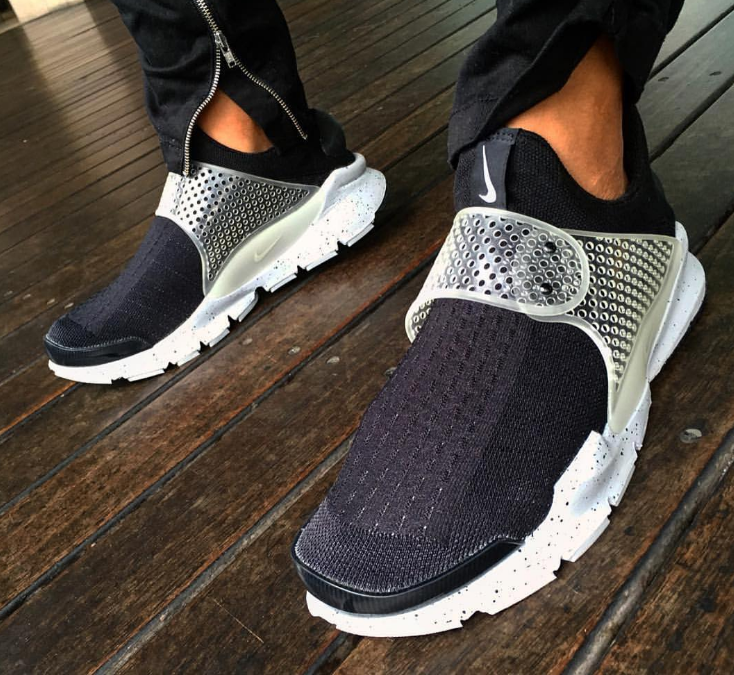Running shoe insoles and inserts may be responsible for many running injuries.
To a new runner, especially if you have muscle strength imbalances, running in a running shoe with super thick, foam insoles or inserts, could make run enormously unstable. The thicker the under-foot cushioning of a running shoe, the harder it is not only for you to sense your foot strike, but landing on all that cushioning makes your balance a little too wobbly.

- Foam insoles reduce proprioceptive reliability, therefore creating more problems during running.
Why Avoid Thick Insoles and Inserts
Humans do not have the ancient genetic roots to run on compliant surfaces, such as foam. How do we know this? Partly because healthy patients always seem to adopt balance impairments, similar to patients with actual balance disorders, on foam surfaces.
A study by Petal et al. (2008) found that foam materials under the foot increased body sway, whereas balance was less perturbed on hard surfaces. This is because proprioception (sensory receptors in the feet) underlies balance control whereby when proprioception is heightened, a runner correctly moves better, making less balance errors.
Though, it is customary for runners to wear a running shoe with foam insoles for protection, these runners end up with the burden of poor balance control responses. A more successful version of protection involves wearing less foam under your feet, therefore creating a more hard plantar surface.
A study by Pyyko et al. (1990) demonstrated that the sole of the barefoot is the most important source for somatosensory information –information on position and motion of the body. But other studies suggest that somatosensory information is made ‘unavailable’ with the use of foam insoles, thereby perturbing balance and inducing very different balance control responses that may be risky for a runner.
Ground-Sense is Everything
In order to achieve the highest level of sensory input to improve your forefoot strike landing, you must either run barefoot or in barefoot-inspired running shoes –this is especially key for new forefoot running learners. In running, proprioception is a specialized building-block for stability, particularly at the ankle. Meyer et al. (2004) found that foam materials under the foot decreased proprioception which increased ankle torque as a compensatory mechanism.
It is hard for a forefoot running learner to initiate long-lasting behavioral changes for injury prevention if they wear foam insoles. Because foam insoles evoke proprioceptive deficits, in effort to change that, a newbie forefoot runner goes through the trouble of unknowingly using other stabilization strategies during running –this is too draining and will cause the learning experience to dwindle.
The best way to get results is to avoid footwear that cause proprioceptive information to be unreliable or difficult to be interpreted by the Central Nervous System.
The Take Home Message
To improve your forefoot running technique, adequate balance control responses must come from surfaces that do not challenge innate postural control mechanisms. Runners need to come to terms with the fact that running form correction relies heavily on reliable proprioception. Wearing pure minimalist footwear or running barefoot are the most manageable strategies to make reliable proprioceptive feedback fully available, thereby preventing the balance perturbations that contribute to injuries.
More From Run Forefoot:
- What Increases Plantar Fascia Strain During Running?
- Tarahumara Running Sandals Prevents Over-Striding
- Why it’s Important to Watch how Ethiopian’s Run
- Quadricep Fatigue Due to Upright Trunk During Running
- Footwear for Forefoot Running
References:
MacLellan MJ, Patla AE (2006) Adaptations of walking pattern on a compliant surface to regulate dynamic stability. Exp Brain Res 173:521–530
Meyer PF, Oddsson LI, De Luca CJ (2004a) Reduced plantar sensitivity alters postural responses to lateral perturbations of balance. Exp Brain Res 157:526–536
Meyer PF, Oddsson LI, De Luca CJ (2004b) The role of plantar cutaneous sensation in unperturbed stance. Exp Brain Res 156:505–512
Patel M, Fransson PA, Lush D, Gomez S (2008a) The effect of foam surface properties on postural stability assessment while standing. Gait Posture 28:649–656.
Patel M, Fransson PA, Lush D, Petersen H, Magnusson M, Johansson R, Gomez S (2008b) The effects of foam surface properties on standing body movement. Acta Otolaryngol: 1–9.
Patel M, Magnusson M, Kristinsdottir E, Fransson PA (2009) The contribution of mechanoreceptive sensation on stability and adaptation in the young and elderly. Eur J Appl Physiol 105:167–173.
Perry S, McIllroy W, Maki B (2000) The role of plantar cutaneous mechanoreceptors in the control of compensatory stepping reactions evoked by unpredictable, multi-directional perturbation. Brain Res 877(2):401–406
Pyykko I, Jantti P, Aalto H (1990) Postural control in elderly subjects. Age Ageing 19:215–221
Wu G, Chiang JH (1997) The significance of somatosensory stimulations to the human foot in the control of postural reflexes. Exp Brain Res 114:163–169.
Bretta Riches
BSc Neurobiology; MSc Biomechanics candidate, ultra minimalist runner & founder of RunForefoot. I was a heel striker, always injured. I was inspired by the great Tirunesh Dibaba to try forefoot running. Now, I'm injury free. This is why I launched Run Forefoot, to advocate the health & performance benefits of forefoot running and to raise awareness on the dangers of heel striking, because the world needs to know.
Latest posts by Bretta Riches (see all)
- Can You Run In Barefoot Shoes? Yes, But DON’T Heel Strike! - 21/07/2024
- Why Cushioned Running Shoes Are Really Bad for Your Feet - 19/07/2024
- Do Cushioned Running Shoes Cause Injuries? - 17/07/2024

Leave a Reply